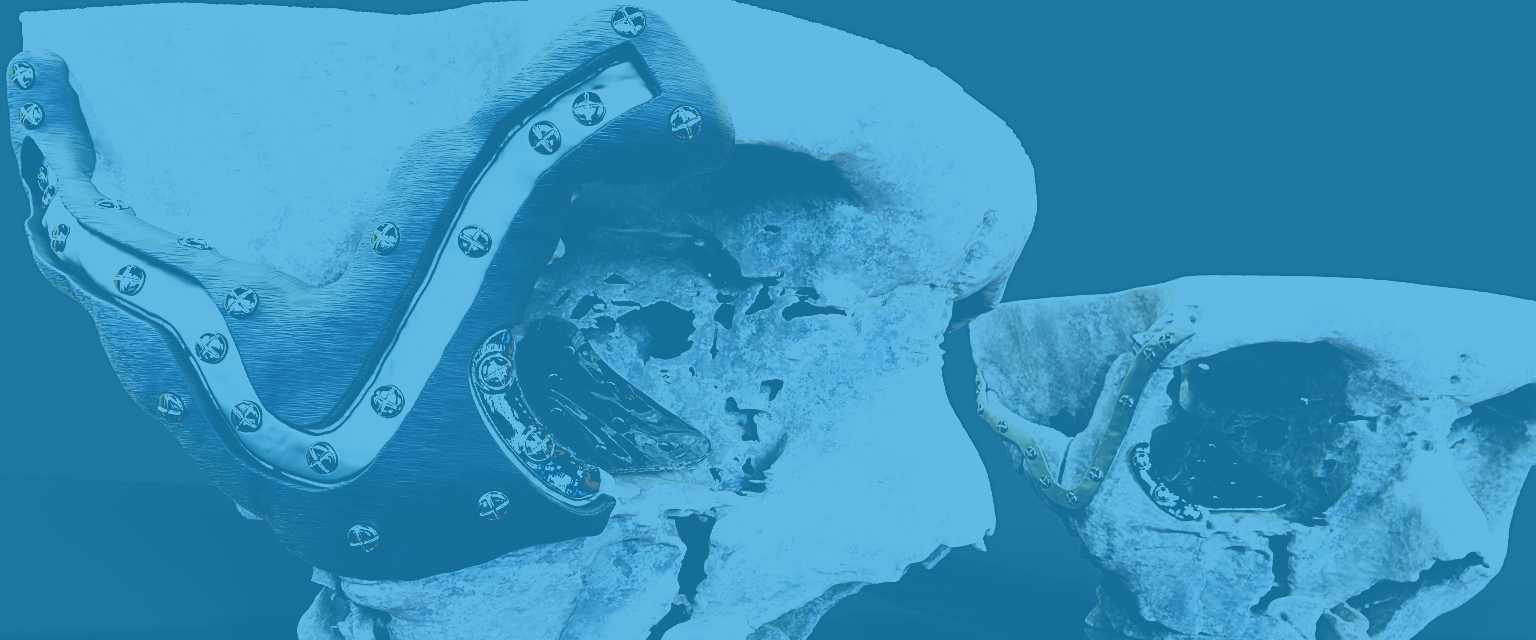

A motorcyclist who was severely injured in an accident has undergone pioneering surgery using techniques developed by the Surgical & Prosthetic Design team at PDR, Cardiff Metropolitan University and the MaxilloFacial Unit at Morriston Hospital.
The patient, Mr Stephen Power, was motorcycling with friends, when he was involved in an accident in Llantwit Major, near Cardiff. He broke both arms and his right leg was so badly damaged it required a bone graft. He also suffered major injuries to his head and face. Stephen underwent emergency surgery at Morriston Hospital, Swansea. His limb injuries were very serious and were managed by the trauma and orthopaedic surgeons and the plastic surgeons.
“We were able to do a pretty good job with all his facial injuries, with the exception of his left cheek and eye socket. We fixed his facial fractures pretty well but he had damaged his left eye and the ophthalmologists did not want us to do anything that might damage his sight further. That was a good move because his eyesight has mostly recovered. But as a result we did not get his left cheekbone in the right place and we did not even try to reconstruct the very thin bones around his eye socket. The result was that his cheekbone was too far out and his eye was sunk in and dropped.”
ADRIAN SUGARThe goal of the most recent surgery was primarily to correct Stephen’s appearance by precisely cutting and moving facial bones. This represented a significant challenge due to the complexity of the necessary movements and proximity of the operation to critical, sensitive anatomy. In order to offer the optimum outcome, a multidisciplinary approach that utilised the latest surgical planning, computer aided design and 3D printing techniques was required.
PDR’s Surgical & Prosthetic Design team are experts at working with hospitals across the UK to pioneer new ways of using advanced computer aided technologies to improve the predictability, efficiency and accuracy of surgical and prosthetic procedures (at lower overall treatment costs). PDR has a formal collaboration with the Maxillofacial Unit at Morriston Hospital; the Centre for Applied Reconstructive Technologies in Surgery (www.cartis.org), which also involves the collaborative expertise of other local, national and international units.
Sean Peel, Business Development Engineer at PDR, with Dr Dominic Eggbeer and Research Associate Ffion O'Malley assisted the Morriston team transforming the medical scan data of the patient into a virtual, 3D surgical model. Precise locations for cuts that would free up sections of facial bone for movement were then decided upon in close collaboration with the clinicians. In order to translate these cuts into theatre, a custom fitting saw guide was designed to fit securely around the anatomy, with slots positioned to guide the surgeon’s movement.
Once the bone sections were freed in the virtual plan, they were carefully positioned to reconstruct the anatomy and provide the best possible symmetry. Custom implants, and a repositioning guide to enable the bone sections to be held securely whilst the implants were placed, were then designed.
“3D Printing is often promoted in surgical use for its own sake – with an emphasis on the technological capabilities of the machines. However, as this case amongst hundreds of others undertaken by PDR shows, developing and using a robust design process is just as important.
The interdisciplinary team works in two different technical languages using two contrasting skill sets from very divergent backgrounds. Through close collaboration, PDR’s design engineers are in a unique position to bridge this gap, translate, and find a balance between what is possible in the operating theatre and what is possible for design and fabrication.”
3D printing was the most logical choice for producing the complex guides and implant shapes. PDR oversaw the fabrication of cutting and positioning guides in bio-compatible cobalt chromium alloy and implants in medical grade titanium - supplied polished in the case of the orbital floor component.
Mr Sugar led a multidisciplinary team that included ENT surgeon, Serryth Colbert, registrar, Ali Al-Rikabi, further theatre staff, and prosthetists Peter Evans and Lawrence Dovgalski. The 8 hour operation went extremely smoothly, with the guides and implants fitting according to the plan. Recovery has gone well since the operation and the swelling gradually reduced, revealing the final outcome.

